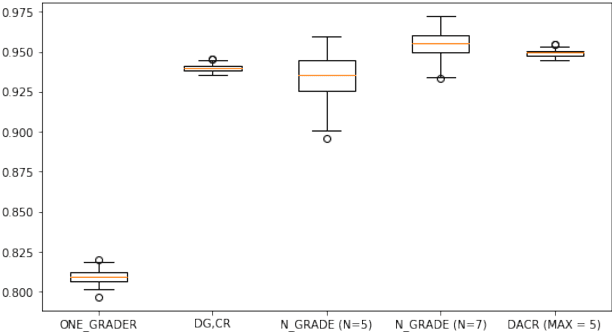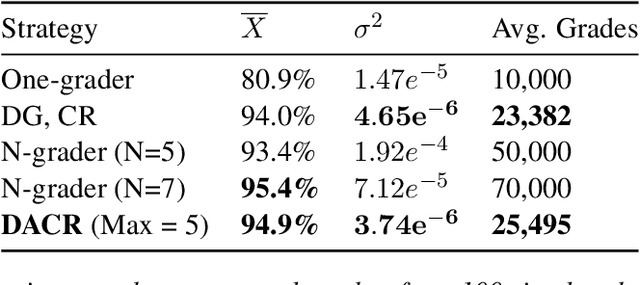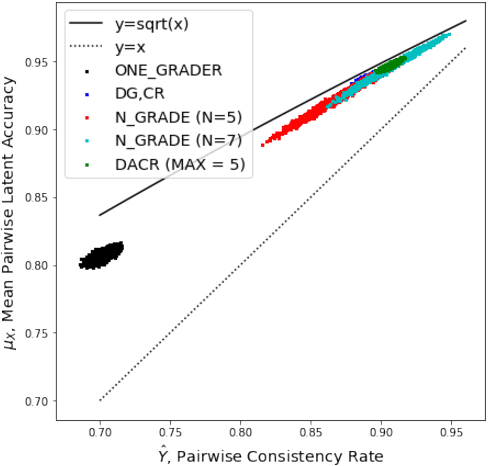David Q. Sun
Protected group bias and stereotypes in Large Language Models
Mar 21, 2024



Abstract:As modern Large Language Models (LLMs) shatter many state-of-the-art benchmarks in a variety of domains, this paper investigates their behavior in the domains of ethics and fairness, focusing on protected group bias. We conduct a two-part study: first, we solicit sentence continuations describing the occupations of individuals from different protected groups, including gender, sexuality, religion, and race. Second, we have the model generate stories about individuals who hold different types of occupations. We collect >10k sentence completions made by a publicly available LLM, which we subject to human annotation. We find bias across minoritized groups, but in particular in the domains of gender and sexuality, as well as Western bias, in model generations. The model not only reflects societal biases, but appears to amplify them. The model is additionally overly cautious in replies to queries relating to minoritized groups, providing responses that strongly emphasize diversity and equity to an extent that other group characteristics are overshadowed. This suggests that artificially constraining potentially harmful outputs may itself lead to harm, and should be applied in a careful and controlled manner.
DELPHI: Data for Evaluating LLMs' Performance in Handling Controversial Issues
Nov 07, 2023



Abstract:Controversy is a reflection of our zeitgeist, and an important aspect to any discourse. The rise of large language models (LLMs) as conversational systems has increased public reliance on these systems for answers to their various questions. Consequently, it is crucial to systematically examine how these models respond to questions that pertaining to ongoing debates. However, few such datasets exist in providing human-annotated labels reflecting the contemporary discussions. To foster research in this area, we propose a novel construction of a controversial questions dataset, expanding upon the publicly released Quora Question Pairs Dataset. This dataset presents challenges concerning knowledge recency, safety, fairness, and bias. We evaluate different LLMs using a subset of this dataset, illuminating how they handle controversial issues and the stances they adopt. This research ultimately contributes to our understanding of LLMs' interaction with controversial issues, paving the way for improvements in their comprehension and handling of complex societal debates.
Gender bias and stereotypes in Large Language Models
Aug 28, 2023Abstract:Large Language Models (LLMs) have made substantial progress in the past several months, shattering state-of-the-art benchmarks in many domains. This paper investigates LLMs' behavior with respect to gender stereotypes, a known issue for prior models. We use a simple paradigm to test the presence of gender bias, building on but differing from WinoBias, a commonly used gender bias dataset, which is likely to be included in the training data of current LLMs. We test four recently published LLMs and demonstrate that they express biased assumptions about men and women's occupations. Our contributions in this paper are as follows: (a) LLMs are 3-6 times more likely to choose an occupation that stereotypically aligns with a person's gender; (b) these choices align with people's perceptions better than with the ground truth as reflected in official job statistics; (c) LLMs in fact amplify the bias beyond what is reflected in perceptions or the ground truth; (d) LLMs ignore crucial ambiguities in sentence structure 95% of the time in our study items, but when explicitly prompted, they recognize the ambiguity; (e) LLMs provide explanations for their choices that are factually inaccurate and likely obscure the true reason behind their predictions. That is, they provide rationalizations of their biased behavior. This highlights a key property of these models: LLMs are trained on imbalanced datasets; as such, even with the recent successes of reinforcement learning with human feedback, they tend to reflect those imbalances back at us. As with other types of societal biases, we suggest that LLMs must be carefully tested to ensure that they treat minoritized individuals and communities equitably.
* ACM Collective Intelligence
Intelligent Assistant Language Understanding On Device
Aug 07, 2023Abstract:It has recently become feasible to run personal digital assistants on phones and other personal devices. In this paper we describe a design for a natural language understanding system that runs on device. In comparison to a server-based assistant, this system is more private, more reliable, faster, more expressive, and more accurate. We describe what led to key choices about architecture and technologies. For example, some approaches in the dialog systems literature are difficult to maintain over time in a deployment setting. We hope that sharing learnings from our practical experiences may help inform future work in the research community.
Feedback Effect in User Interaction with Intelligent Assistants: Delayed Engagement, Adaption and Drop-out
Mar 17, 2023Abstract:With the growing popularity of intelligent assistants (IAs), evaluating IA quality becomes an increasingly active field of research. This paper identifies and quantifies the feedback effect, a novel component in IA-user interactions: how the capabilities and limitations of the IA influence user behavior over time. First, we demonstrate that unhelpful responses from the IA cause users to delay or reduce subsequent interactions in the short term via an observational study. Next, we expand the time horizon to examine behavior changes and show that as users discover the limitations of the IA's understanding and functional capabilities, they learn to adjust the scope and wording of their requests to increase the likelihood of receiving a helpful response from the IA. Our findings highlight the impact of the feedback effect at both the micro and meso levels. We further discuss its macro-level consequences: unsatisfactory interactions continuously reduce the likelihood and diversity of future user engagements in a feedback loop.
Improving Human-Labeled Data through Dynamic Automatic Conflict Resolution
Dec 08, 2020



Abstract:This paper develops and implements a scalable methodology for (a) estimating the noisiness of labels produced by a typical crowdsourcing semantic annotation task, and (b) reducing the resulting error of the labeling process by as much as 20-30% in comparison to other common labeling strategies. Importantly, this new approach to the labeling process, which we name Dynamic Automatic Conflict Resolution (DACR), does not require a ground truth dataset and is instead based on inter-project annotation inconsistencies. This makes DACR not only more accurate but also available to a broad range of labeling tasks. In what follows we present results from a text classification task performed at scale for a commercial personal assistant, and evaluate the inherent ambiguity uncovered by this annotation strategy as compared to other common labeling strategies.
 Add to Chrome
Add to Chrome Add to Firefox
Add to Firefox Add to Edge
Add to Edge